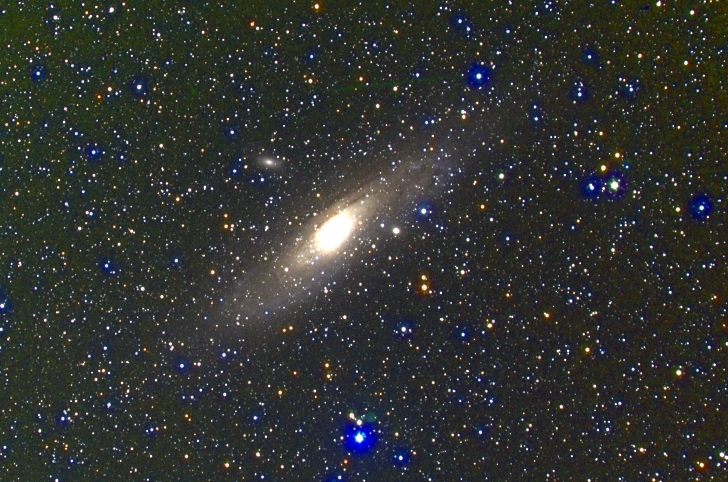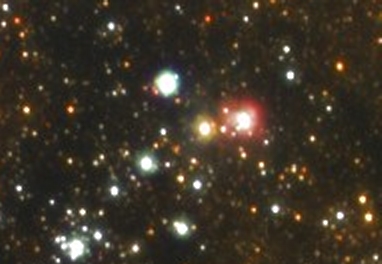L2RGB combine LRGB and dithering techniques. Compared to the traditional LRGB, I image in the HSI space is here replaced by the drizzled combination of many subsampled images.
We test the algorithm for situation where CCD greatly undersample the image.This the case then the goal is large field of view for survey program (new comets detection program, novae, variable stars). My test images were taken through photographic optics having short focal lenght, between 55 and 80 millimeters.
In the following example (M20 region) I used a 80 mm objective with a f-number of 4 for R, G and B frames (Audine CCD camera + KAF-0401E used in 2x2 binning). The exposure time is of 10 x 60 seconds for red band, 10 x 60 seconds for green band and 10 x 90 seconds for blue band.
For the I image, which is required
finest, the f-number is 5.6 for the 80 mm objective. The CCD camera
is the same and I use an R filter. The FWHM in this situation is
about 1.2 pixels, i.e. the image is severely undersampled. The I
image in the HSI space (or L image in the L2RGB designation) is
the drizzling combination of 15 dithered 60 seconds exposure time
frames.
|
|
Figure
17. Left,
shift and add combining (note the severe chromatism of the objective).
Right, one used L2RGB technique.

Figure
18. Click on the image to see a larger version of
the L2RGB result. 80 mm objective lens
and KAF-0401E CCD.

 .
.
Figure
19. Another
example of application of L2RGB procedure. We observe here the M31
galaxy. Top, standard combining of the RGB components. Bottom, the
L image of the L2RGB processing (or I image in the HSI space) is
the result of the optimal composite of 15 diphered frames. 80 mm
photographic lens and Audine camera with KAF-0401E. The blue
diffusion around brigth stars is caused by the strong chromatic
aberration of the objective. Click on the image to see the final format.
Images processed with Iris software.

